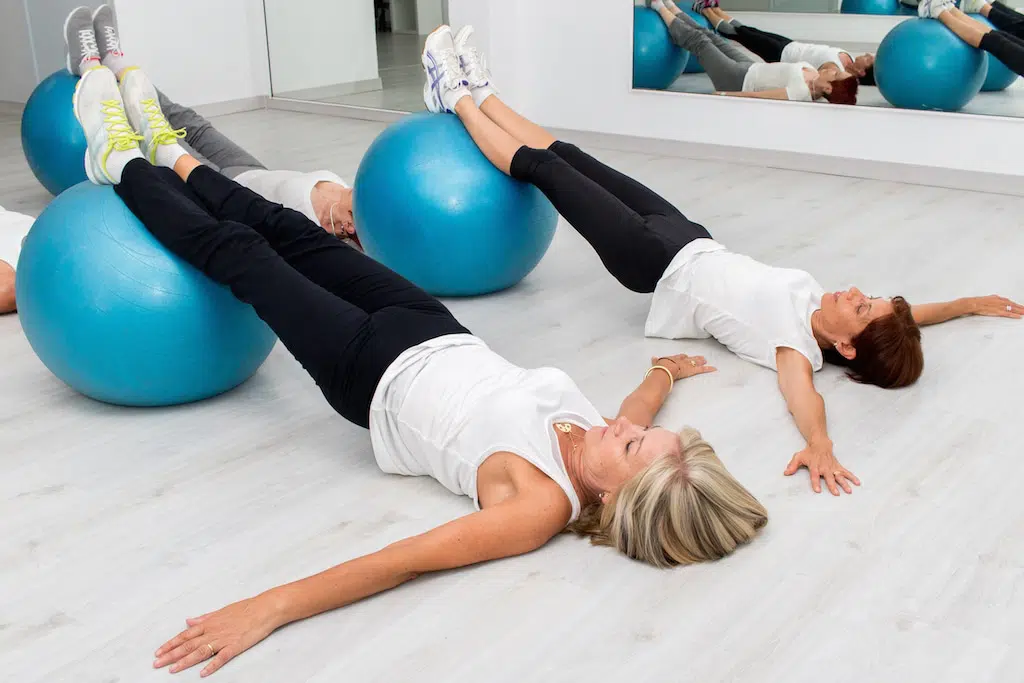Stroke Rehab Exercises: Passive Vs. Active
After a stroke is over, its survivor is not in the clear. A stroke leads to neurological damage that affects the motor system, making limbs weak and limiting movements. It can also affect sensory input to the brain, which can impair speech, vision, touch, and more.
Fortunately, stroke survivors can regain movement and prevent further complications through both passive and active rehabilitation exercises. Each type of exercise serves different and important purposes for stroke patients.
What Are Passive Exercises?

Passive exercises are called as such because the muscles are moved by an outside force, either a machine, another body part, or another person. Also known as range-of-motion, or ROM exercises, passive exercises help prevent stiffness in your joints, work to stretch muscles, and can help increase and maintain range-of-motion.
Who Are They Right For?
After a stroke, 17 to 38 percent of survivors suffer from spasticity, which inhibits signals from the brain to the muscles. Stroke survivors who currently suffer from spasticity or show signs of paresis can benefit from passive exercises. Those who do not yet show symptoms can still benefit from range-of-motion exercises to prevent the development of symptoms.
Passive Exercise Examples
A few passive exercises that you can do daily on your own include:
- Flexing your fingers. Bend your fingers into your palm and then straighten them, or work on straightening your fingers if they are already bent. Repeat 5 to 10 times.
- Stretching and moving your arms. At least 3 times per day, allow arms to move through their full range of motion. As you do so, stretch tight muscles as much as your body will allow, and hold for 60 seconds.
- Stretching and flexing your wrists. Lie on your back with arms straight up in front of you. Clasp your hands together and bend wrists from side to side between 5 and 10 times.
What Are Active Exercises?

Unlike passive exercises, active exercises require muscle exertion and body movement. Active exercises can be range-of-motion exercises or general exercises to move the body and help strengthen the neural signals that communicate with your body to perform movements. This process is known as cortical plasticity.
Who Are They Right For?
Stroke survivors who suffer from impaired joint and muscle movement can regain much of their movement through active exercises. Active exercises will help retrain the brain to communicate with the body through cortical plasticity. Those who suffer a stroke should begin using active exercises as soon as possible post stroke to regain movement.
Active Exercise Examples
Some important active exercises to include in your rehabilitation routine after a stroke are:
- Finger, hand, and wrist movements. Flip a light switch on and off several times with your fingers, squeeze a toothpaste tube, or turn an object upside-down and back upright.
- Arm and leg movements. Stand upright and balance against an object with all of your weight on one leg, swinging the other leg out and back in several times. To stretch arms, press your hands down on a table with wrists rotated and fingers pointing toward you, and move your body back until you feel your arms stretch.
- Core exercises. Lie flat on the floor, lift your pelvis, and hold it for several seconds, then lower back down and repeat. You can also try this with an exercise ball under one leg.
For more active exercise ideas, check out our guide to exercising after surviving a stroke.
Get Moving

Active and passive exercises are important for any stroke survivor to prevent further complications involving the sensory and motor systems and to regain movement lost from impaired neural signals. Passive exercises are used to prevent stiffness and regain range of motion in muscles, whereas active exercises help strengthen the communication between the brain and body for increased movement. Immediate and continuous rehabilitation exercises are key in a survivor’s progress after stroke.
All content provided on this blog is for informational purposes only and is not intended to be a substitute for professional medical advice, diagnosis, or treatment. Always seek the advice of your physician or other qualified health provider with any questions you may have regarding a medical condition. If you think you may have a medical emergency, call your doctor or 911 immediately. Reliance on any information provided by the Saebo website is solely at your own risk.

